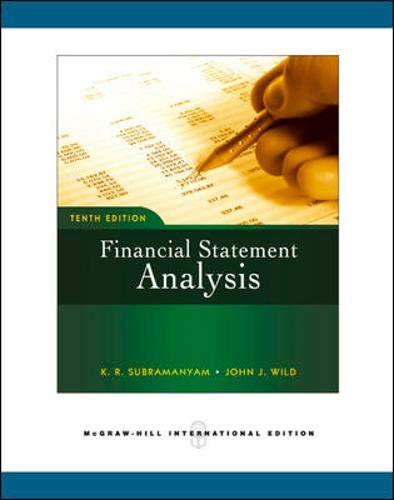CASE 85 Wal-Mart and Sears (prior to its merger with Kmart), two Sears and Wal-Mart large retailers
Question:
CASE 8–5 Wal-Mart and Sears (prior to its merger with Kmart), two Sears and Wal-Mart large retailers in the U.S., offer an interesting study in contrasts.Wal-Mart has steadily grown to become the world’s largest retail company and probably the most successful story in the history of retailing, Sears, on the other hand, had a long and checkered past. In the early 1990s the company almost went out of business. It subsequently reinvented itself, made a comeback (although somewhat bumpier than its investors and creditors would have liked) and, finally, merged with Kmart.The table below provides some comparative information on the two companies for 1999 (the financial statements are available in Exhibits I and II).
Market Total Net Earnings Dividend P/E P/B
$ Billions Cap Revenue Assets Equity Income Growth* ROE Payout Ratio Ratio Sears $ 11.21 $ 41.07 $36.95 $ 6.84 $1.45 5.5% 22.5% 24% 7.73 1.64 Wal-Mart $244.02 $166.81 $70.349 $25.83 $5.38 17.5% 22.9% 16% 45.35 9.45
*Cannot compute form data provided The differences between the two companies are striking, especially with respect to market valuation.
While Wal-Mart’s assets were twice that of Sears, its market capitalization at that time was more than 20 times that of Sears! The P/E and P/B ratios shed further light on this issue: the P/E and P/B ratios for Wal-Mart are almost six times as large as those of Sears!
This differential valuation is more surprising because Wal-Mart and Sears appeared to be equally profitable: in that year their ROEs were comparable at 22.5% and 22.9%, respectively. Part of the higher market valuation of Wal-Mart could be attributable to its superior growth: Wal-
Mart’s earnings grew at a compounded 17.5% per annum during the 1990s compared to 5.5% for Sears over a comparable period. However, earnings growth may not be the entire story. A more detailed analysis of the profitability of the two companies is called for, and it is important to analyze how each company generates this return.
Required:
1. Rearrange the income statement and the balance sheet of the two companies for 1999 and 1998 in the operating/
nonoperating format described in the text (for example, compute NOA, NFO and SE for the balance sheet, and compute NOPAT, NFE and NI for the income statement.)
2. Provide a breakdown of the ROEs of the two companies for 1999, showing the financial and operating leverages described in the text and their effects (you may use closing balance sheet data for computation of the return ratios). What does this analysis tell you about the inherent riskiness of the two companies?
3. Analyze the profit margin and asset turnover ratios of Sears and Wal-Mart by using line item information from the financial statements.
4. Sears’s low return-on-assets ratios and high leverage could be partly attributable to its credit card operations—in effect, Sears is partly a financial institution. Exhibit III provides select financial information about Sears’ credit card and other businesses obtained from segment information in notes to its financial statements.
Using this information, analyze the relative returns on Sears’s retailing and financing businesses and its impact on the overall risk-return profile of the company.
5. Summarize your conclusions for the difference between the market capitalization for Sears and Wal-Mart using the analysis you performed in parts 1 through 4.
Step by Step Answer:






